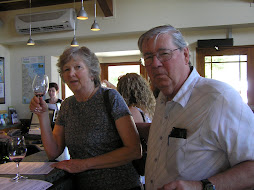Words are interesting, both in where they came from and in what they presently represent.
Here we are, fixin' to eat yet again, this time on the patio of the El Charro near downtown Tucson, the (self-proclaimed) oldest

continuously operating Mexican restaurant, owned by the same family to boot, in the United States (since 1922) and the home of the chimichanga (a deep fried burro, for the uninitiated; or a deep fried, tortilla wrapped concoction of beans, meat and cheese for the totally uninitiated).
And here is another concoction, allegedly big in Mexican cuisine

but found (by me at least) nowhere else but in Tucson – a topopo salad. I first had one in a little place on 22nd St. just west of Swan many years ago, and had one here, but have never seen it offered anywhere else. With just a little research I found this interesting tidbit: "Topopo" means volcano in Spanish and, appropriately, the salad is a conical monument of shredded lettuce, tomatoes, cheese, shredded chicken and olives.
And as you can see by the picture that is an apt description.
On our way into town one day we saw mistletoe in a mesquite tree. Most folks are unaware that mistletoe is a parasite, living in New Mexico in juniper trees and here in Arizona in mesquites. What is mistletoe, other than a bouquet under which we kiss at holiday time?

The word "mistletoe" is derived from the Anglo-Saxon words, "mistel" (dung) and "tan" (twig) -- misteltan is the Old English version of mistletoe. It's thought that the plant is named after bird droppings on a branch [source: mwrop.org].
One of the beliefs in the early centuries was that mistletoe grew from birds. People used to believe that, rather than just passing through birds in the form of seeds, the mistletoe plant was an inherent result of birds landing in the branches of trees.
So how did this plant become entwined with Christmas? The holiday has assimilated a wide range of customs and traditions from many cultures, and mistletoe is one of them. For example, one French tradition holds that the reason mistletoe is poisonous is because it was growing on a tree that was used to make the cross on which Jesus Christ was crucified. Because of this, it was cursed and denied a place to live and grow on Earth, forever to be a parasite [source: Saupe].
Mistletoe is also said to be a sexual symbol, because of the consistency and color of the berry juice as well as the belief that it is an aphrodisiac, the “soul” of the oak from which it grows. The origin of the tradition of kissing under the mistletoe is vague. However, the tradition may have stemmed from either the Viking association of the plant with Frigga (the goddess of love) or from the ancient belief that mistletoe was related to fertility. Another explanation for the tradition is that it is derived from the festival of Saturnalia, a popular mid-December celebration in ancient Rome [source: BBC.com].
Mistletoe is a symbol of love and fertility.
The correct mistletoe etiquette is for the man to remove one berry when he kisses a woman. When all the berries are gone, there's no more kissing permitted underneath that plant.
One legend states that a couple who kisses underneath mistletoe will have good luck, but a couple neglecting to perform the ritual will have bad luck. Specifically, it is believed that a couple kissing under the mistletoe ensure themselves of marriage and a long, happy life, while an unmarried woman not kissed under the mistletoe will remain single for another year.






































